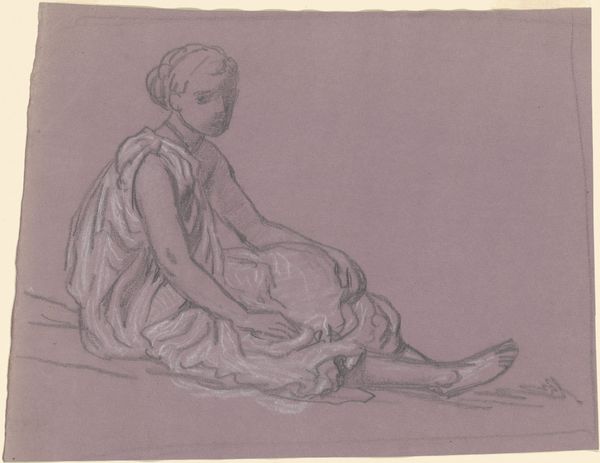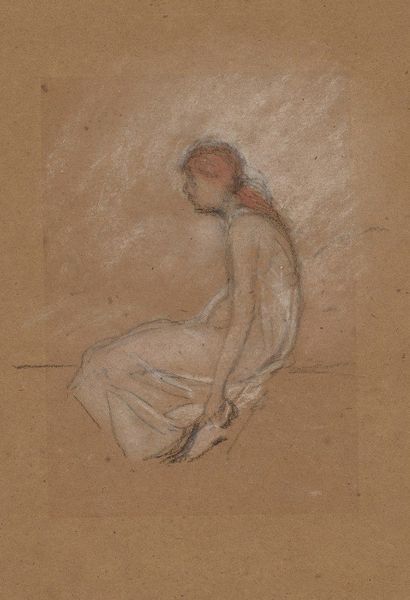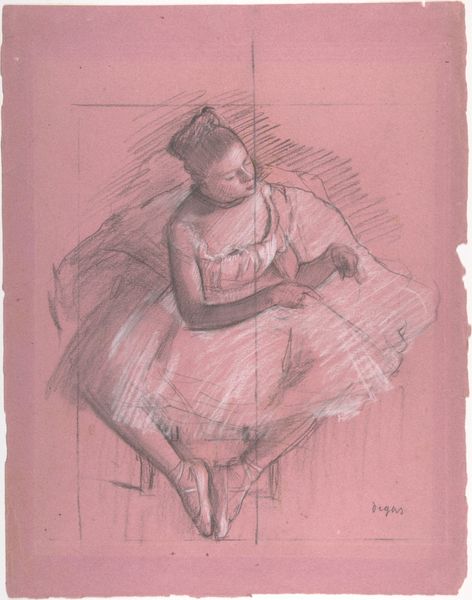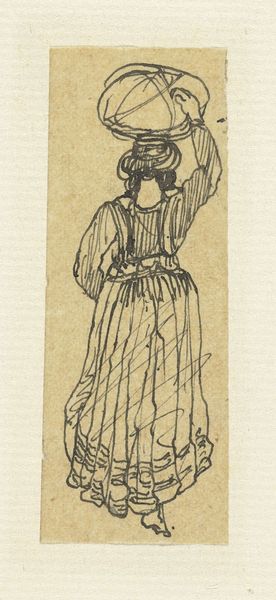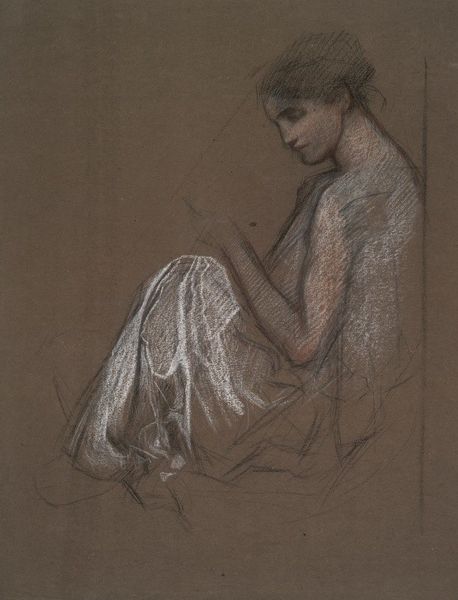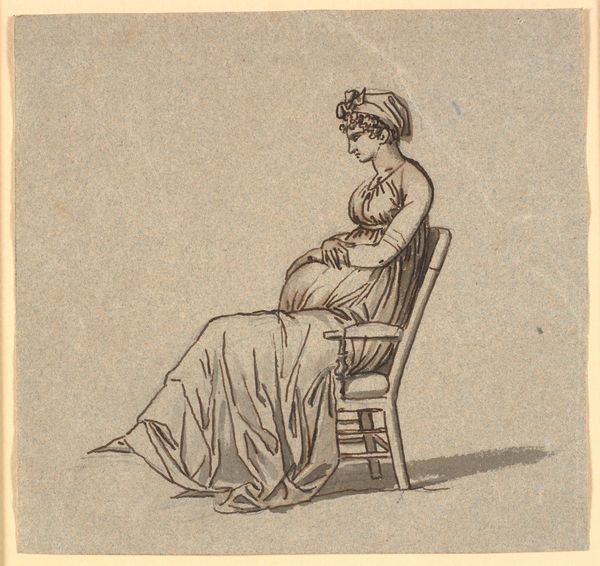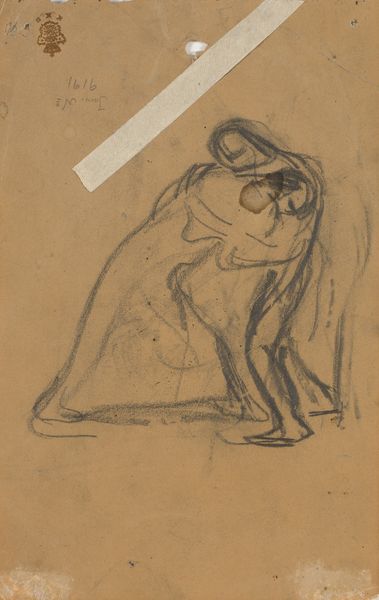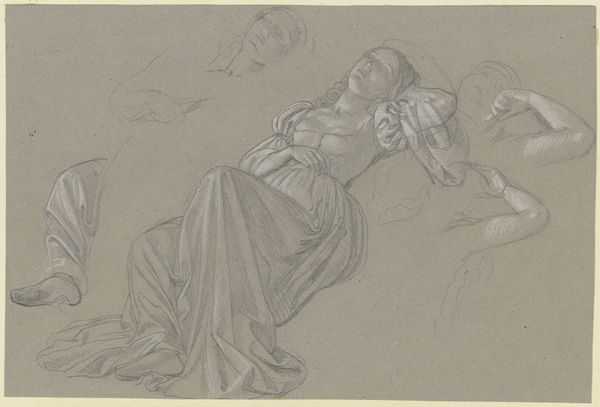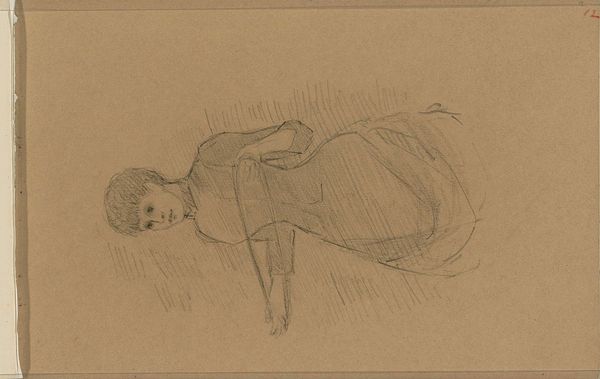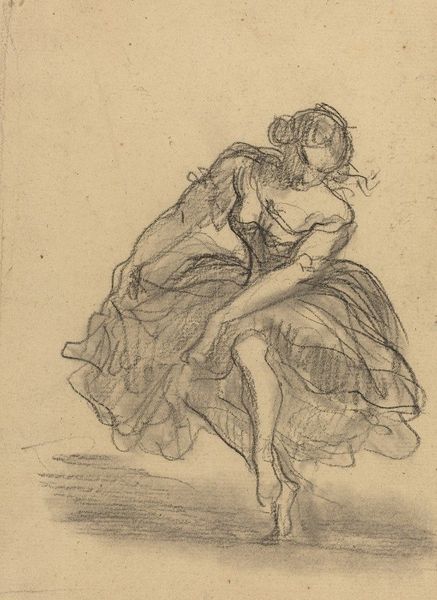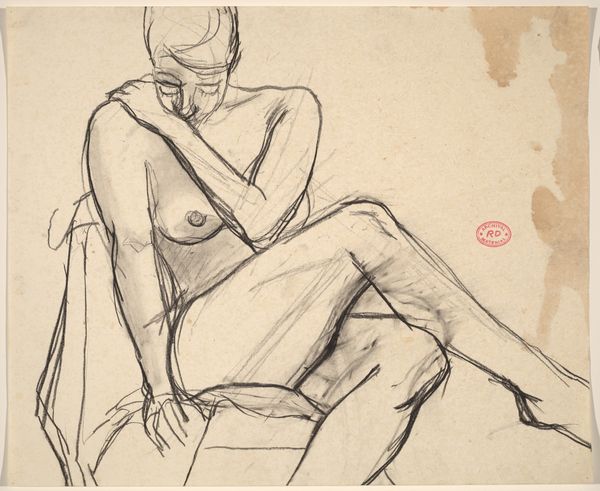
Dimensions: sheet (irregular): 14.92 × 21.75 cm (5 7/8 × 8 9/16 in.)
Copyright: National Gallery of Art: CC0 1.0
Curator: This is Elihu Vedder's "Study for 'Greek Girls Bathing'," created around 1872. It's an oil on canvas piece. What's your immediate impression? Editor: It feels incredibly serene, almost melancholy. The muted color palette contributes to that feeling. The figure is cropped somewhat arbitrarily which gives the image a modern, intimate mood despite its classical subject matter. Curator: Vedder was deeply influenced by the aesthetics of classical realism, and he often explored historical narratives through his work. In this preparatory study, we see his attempt to capture the essence of idealized feminine beauty within a specific socio-historical context. It reflects a Western fascination with, and romanticization of, the “Orient”. Editor: The gesture, though incomplete, directs my gaze, and the implied narrative asks questions: Who are these "Greek Girls," what activities have they engaged in or will engage in, and why are they only defined in relation to each other? The headdress looks to have an identifiable iconography of adornment and status worth investigating, perhaps offering deeper insights into ancient Greek aesthetics and societal structures of identity, gender, and possibly class. Curator: Right. It is crucial to analyze how Vedder's painting reinforces or subverts the dominant narratives of its time regarding gender and race. Do we see a respectful engagement with antiquity, or is there evidence of appropriation or exoticism? This artwork serves as an example of cultural representation and should promote thought about its political and historical dimensions. Editor: I'm drawn to the repetition of soft, circular shapes—the folds of the garment, the contour of the knee, and that barely defined head covering. It lends an undeniable harmony, but does the lack of distinguishing features perpetuate, even unintentionally, some level of archetypal objectification? What specific symbolic and emotional resonances are the Greek classical attributes meant to elicit? Curator: Precisely. The “idealized” female body is situated in direct relation to historical contexts, even in something seemingly as benign as a study. This becomes central to contemporary conversations around identity and representation. Editor: Thinking about the symbolism and memory attached to classical attire like her garment, which looks something like a peplos, allows an investigation of timeless aesthetic continuities but it needs always to remain grounded in acknowledging cultural power and visibility. Curator: By placing Vedder’s work within a broader critical context, we can challenge entrenched perspectives. I see the possibility for conversations that further inclusive representation within both historical and contemporary spheres. Editor: Ultimately, this image, though incomplete, leaves one contemplating the layers of symbolism embedded within artistic portrayals and what stories or experiences were given weight and what meanings those symbolisms hold today.
Comments
No comments
Be the first to comment and join the conversation on the ultimate creative platform.
